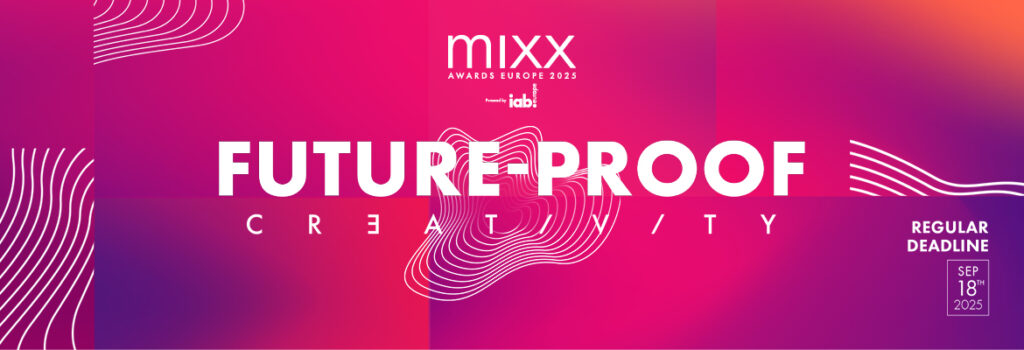
Retail media is growing rapidly, as an increasing number of brands and retailers jump at the opportunity to transform the advertising landscape. Despite this, there are very few – if any – dedicated publications informing the industry, and celebrating the space.
Retail media ad spend (including Amazon) is set to surpass £5.5 billion in the UK in 2026 (source: IAB UK), with Europe-wide spend exceeding €22.3 billion (£18.7 billion) (source: IAB Europe).
These figures highlight the sheer scale of the space, but resources associated with it are scarce.
That’s why Retail Media Age has been launched – a community-focused publication, where both the industry’s leading voices and those just starting out can collaborate. The title will feature key news stories, interviews, and thought leadership, alongside research and a space for discussion and debate around key themes and topics.
The publication is backed by an advisory board, on which sits the likes of Rob Edwards (Arla), Alice Anson (Nectar360), Chris Mude (John Lewis), Jill Orr (Criteo), Jason Wescott (WPP Media), Marie-Clare Puffett (IAB Europe), Uche Ofili (SMG), and Ellie Prendergast (Co-op Media Network / Women in Retail Media).
Retail Media Age will officially launch on the afternoon of 10th September in London, as part of New Digital Age’s annual Foresight conference.
The ‘Welcome to the (new) Retail Media Age’ event will feature speakers including PayPal, ITV, Expedia, Trainline, and MiQ, and IAB Europe's very own Lauren Wakefield also adding her voice.
The event will kick off with an introduction to the title from its Editor, Tyrone Stewart, followed by a pair of panel discussions – ‘The Retail Media Revolution…’ and ‘... Goes Beyond Just Retail’ – before closing with a keynote.
The first panel will explore the reasons behind the retail media’s rapid growth, and discuss what its continued evolution will mean for the future of advertising.
Meanwhile, panel two will take a look at the wider world of commerce media and why the model should no longer be limited to retailers, and why a multi-vertical approach may be the way to deliver the best results for brands.
The launch event provides a natural follow-on from the “soft launch” of the publication at the Cannes Lions Festival of Creativity.
The New Digital Age and Retail Media Age event – in partnership with Epsilon – featured speakers including Lucia Mastromauro, VP of Advertising at Deliveroo; Ana Laura Zain, CMO at Pentaleap and Co-founder of Women in Retail Media Collective; Thibault Hennion, MD International Operations at Epsilon; Teresa Fusaro, Senior Director, Marketing Activation, Tech & Digital at Reckitt; Rosie Houston, MD for UK Retail Media Partnerships at SMG; and Laura Belchier, Head of Consumer Experience Brands at Amazon Ads UK.
‘Welcome to the (new) Retail Media Age’ event will no doubt provide similarly interesting insights into the world of retail and commerce media from more industry leaders. You can’t afford to miss it!
Join Retail Media Age on 10th September in London at the ‘Welcome to the (new) Retail Media Age’ event, and position yourself as one of the early leaders in this community.

The MIXX Awards Europe 2025 are in full swing, and this year’s theme, Future Proof Creativity, has already sparked inspiration across the continent. With 28 categories spanning Tech & Innovation, Content & Social, Strategic Impact, Media Innovation, and Culture & Immersion, there’s a perfect fit for every ambitious campaign.
Our judges are all senior-level leaders from across Europe, uniting brand, agency, publishing, and tech innovation expertise to deliver a fair and insightful evaluation of your campaigns.
Confirmed 2025 jury members include:

Agnieszka Parfienowica, Managing Director, Media Solutions, WPP Media

Andreas Staios, Digital Director, UM

Connie Hawker, TV+ & Creators Lead, IAB UK

Elsa Kalervo, Head of Digital Audio, Bauer Media Group Finland

Nazlı Eda Kırali, Marketing Director & Head of Media, Digital, The Magnum Ice Cream Company Turkey

Sascha Dolling, General Manager, Mediaplus Realtime
With some new and some returning judges on the panel, you’ll benefit from a unique blend of awards experience and fresh insight from across the digital advertising ecosystem.
Explore all of this year’s judges on our MIXX Awards page here
Entering MIXX Awards isn’t just about winning, it’s about spotlighting your campaign’s power, strategy, and vision on a pan-European stage:
Winners receive more than trophies. They’re featured in IAB Europe’s Knowledge Hub, announced across media channels, and often spotlighted via case studies, podcasts, webinars, and more.
Entries are evaluated equally on Strategy (33.3%), Creative (33.3%), and Results (33.3%). Gold winners also have the opportunity to compete for the coveted MIXX Grand Prix.
For more winning tips from last year’s awards:
Check the Entry Notes and FAQs on our Awards webpage here before you submit.
Need help? Contact the team at awards [at] iabeurope.eu
Let’s celebrate the work that moves our industry forward. We can’t wait to see what you’ve built, and to put your future-proof creativity in front of Europe’s leading experts.

Our Interact 2025 speaker Q&A series continues, and this time we're spotlighting all things AI.
In this Q&A interview, recorded live at Interact 2025 in Brussels (20th-21st May), Dominique shares her perspective on the transformative role of AI in digital advertising. From busting myths to offering practical advice, she explains why businesses must adapt quickly - because when it comes to AI, it’s thrive or die.
Our Interact 2025 conference, held on 20th–21st May at nHow Brussels, brought together Europe’s digital advertising community for two days of big ideas and bold discussions.
Under the theme ‘Digital Skylight - Clarity and Purpose for 2025 and Beyond’, the event covered everything from policy and sustainability to programmatic, Retail Media, and more, all designed to equip the industry with the insights needed for the year ahead.
👉 Watch the event highlights here
👉 Catch up on our Q&A with Dr. Daniel Knapp here
👉 Catch up on our Q&A with Magnite here
👉 Catch up on our Q&A with WPP Media here
👉 Catch up on our Q&A with Google here
👉 Catch up on our Q&A with Ad Net Zero here

The countdown is on! With just over a month to go, the full agenda for our Retail Media Impact Summit 2025 is now live. And with only a handful of tickets left, this is your final chance to join 150+ senior leaders in shaping the future of Retail Media.
Rather than a parade of product pitches, the Summit has been designed as a working agenda built around critical themes that reflect the most urgent challenges facing the industry today. Each session is anchored in open discussion, collaborative problem-solving, and the shared goal of creating usable outputs, including whitepapers, best practice guides, shared standards, and practical next steps for the industry.
The day will open with a series of impactful keynotes, including:
A Macroeconomic Outlook

Our Chief Economist, Daniel Knapp, will open the Summit with a clear view of the economic and media forces shaping Retail Media in Europe, from shifting consumer spending to advertising investment trends and growth opportunities.
Europe’s Leapfrog Moment in Retail Media: The Opportunity to Lead

In this session, Retail Media Leader & Strategist, Drew Cashmore, will explore why Europe is uniquely positioned to lead the next wave of retail media. Attendees will hear how Europe can avoid the pitfalls seen in other markets, build a model based on simplicity and interoperability, and set the global standard for collaboration, influence, and measurement integrity.
Live Retail Media Roundtable
The morning will close with Daniel and Drew coming together for a fire-side chat on the Retail Media landscape. In this live roundtable, they will explore what’s driving growth, where challenges remain, and how retailers and brands can unlock Retail Media’s full potential in Europe.
The afternoon will then move into carefully curated breakout sessions, designed to foster meaningful dialogue and practical collaboration. Attendees will dive into some of the most pressing areas of Retail Media today, including:
Unlocking the Untapped Potential of Digital In-Store: What will it take to get to the Next Frontier?

Led by Chris Riegel, CEO of STRATACACHE, this session will examine new empirical evidence showing that digital in-store signage boosts sales conversion, while also unpacking why its potential remains underused.
The Blueprint for Data Collaboration in Retail Media


Our Retail Media Consultant, Yara Daher, and Tami Harrigan, Vice President, Business Development at Appsflyer, will explore how Data Collaboration Platforms are shaping Retail Media strategies. This session will showcase real-world examples from AppsFlyer, explore barriers like interoperability and data access, and invite attendees to share ideas for scalable, privacy-safe collaboration.
Breaking the Channel Mindset: One Retailer, One Shopper, One Strategy


Driven by Dan Sands, Regional Director, EMEA, and Lisa Avery, Director of Customer Success, EMEA from Zitcha, this session will challenge the siloed approach to in-store, app, CTV, and eCommerce, with Zitcha showcasing how a unified, shopper-first strategy drives better outcomes.
The Duo Effect: Retail Media and Connected TV
Daniel Knapp will share exclusive insights on the macro trends driving Retail Media and CTV convergence, and what it means for advertisers, platforms, and retailers. Through live polling and open discussion, participants will be integral to an IAB Europe thought-leadership piece capturing collective industry perspectives.
Attendees can also expect cutting-edge sessions on Retail Media Certification, the evolution of Commerce Media standards, and on-site opportunities such as sponsored products, as well as a deep dive into the value of incrementality measurement. With brand and retailer case studies and interactive discussions, you’ll be at the forefront of shaping what’s next in this fast-moving space.
To close the day, you’ll hear from global leaders, including Tesco Media & Insight Platform and MediaMarkt Saturn, who will share how they’ve successfully built and expanded retail media businesses. Expect real-world lessons on growing across channels in a customer-centric way, the pitfalls to avoid, and how a collaborative approach can unlock faster, more sustainable growth.
The Retail Media Impact Summit is as much about the people as it is about the content on stage. Dedicated networking breaks and lunch will provide space to exchange insights and connect with peers, while the evening networking dinner offers the chance to continue conversations in a more relaxed setting.

We’re delighted that the Managing Director of MediaMarktSaturn Retail Media will deliver the opening speech at the dinner, setting the tone for an evening of inspiration and collaboration.
From start to finish, the Summit is designed to foster meaningful connections and partnerships that extend well beyond the event.
With just a handful of tickets left, this is your last chance to be in the room with Europe’s top Retail Media leaders.
👉 Explore the Full Agenda & Register Here
We look forward to welcoming you to Amsterdam for what promises to be a landmark working summit for Retail Media in Europe.
Don’t forget, IAB Europe members can access exclusive discounted rates.

We’re calling on addressability and measurement experts from across the digital advertising ecosystem to share their insights in a new industry survey.
Developed by our Addressability & Measurement Working Group, a short survey has been designed to better understand how addressability and measurement solutions are currently being adopted in Europe. We’re seeking input from advertisers, agencies, publishers, and technology providers to capture a clear picture of:
By participating, you’ll be contributing to vital industry knowledge that will help:
It will take less than 10 minutes to complete – and your feedback will directly help the industry move forward together.
Deadline to participate: Friday, 12th September

Our Interact 2025 speaker Q&A series continues, and this time we’re spotlighting the importance of sustainability at events and in digital advertising.
Recorded live at Interact 2025 in Brussels (20th–21st May), this insightful Q&A explores why putting sustainability front and centre at events like Interact is more than a good idea - it’s essential. Mary shares her perspective on how Ad Net Zero’s mission is shaping industry standards, inspiring collective action, and making sustainable advertising an integral part of European digital marketing.
Our Interact 2025 conference, held on 20th–21st May at nHow Brussels, brought together Europe’s digital advertising community for two days of big ideas and bold discussions.
Under the theme ‘Digital Skylight - Clarity and Purpose for 2025 and Beyond’, the event covered everything from policy and sustainability to programmatic, Retail Media, and more, all designed to equip the industry with the insights needed for the year ahead.
👉 Watch the event highlights here
👉 Catch up on our Q&A with Dr. Daniel Knapp here
👉 Catch up on our Q&A with Magnite here
👉 Catch up on our Q&A with WPP Media here
👉 Catch up on our Q&A with Google here

As Europe’s Retail Media ecosystem continues to scale, marketers and retailers alike are seeking sharper measurement, clearer standards, and deeper collaboration. That’s why our Retail Media Impact Summit 2025, taking place on 24th September in Amsterdam, is bringing together industry leaders to focus on six critical themes to help shape what comes next.
Across nine breakout sessions, participants will explore:
At the heart of the Summit is a shared goal: to align on what’s needed to unlock the full potential of Retail Media in Europe.
A key session will spotlight our upcoming Incrementality Measurement Guidelines, due for public comment in September. These guidelines, developed in close collaboration with retailers, advertisers, and measurement providers, aim to bring structure and consistency to one of the industry’s most debated metrics: incremental sales impact.

To preview the discussion, we caught up with our Retail Media Consultant, Yara Daher, who is speaking in the session, to explore the importance of this work, what industry feedback has revealed so far, and what steps are needed next to move the space forward.
At the summit, we would like to build a common understanding around the work that has been done so far and further it with diverse opinions and best-in-class thought leadership.
Incrementality measurement is frequently lauded as the ultimate goal in Retail Media, and in many respects, it truly is. It offers a clear understanding of the direct causal impact of advertising efforts, moving beyond correlation to reveal precisely how much sales or other key performance indicators (KPIs) are directly attributable to a specific campaign. This level of insight is invaluable for optimising budgets, refining strategies, and demonstrating true return on investment. However, it's crucial to recognise that incrementality measurement doesn't apply to every scenario, campaign objective, or campaign size.
To execute incrementality measurement properly, very precise statistical methodologies are required. This necessitates a significant investment in resources. The complexity and resource intensity mean that it is simply not always feasible or cost-effective for every organisation or every campaign. Therefore, it shouldn't be blindly applied across the board without careful consideration of its practical implications and the specific goals of the campaign.
Recognising these nuances, IAB Europe is actively engaged in a comprehensive initiative to bring clarity and standardisation to this area.
There is a true appetite for this kind of work. There is a common understanding that easy answers aren’t always the right ones. Most brands and retailers we have spoken to recognise that we are early in the journey and need to put our heads together as an industry to find answers.
Retail Media grew to what it is today because of its ability to provide point-of-sale (POS) sales data. While ROAS has long been the primary metric, incrementality presents a new opportunity to definitively answer the enduring question about advertising impact. It offers unparalleled proof of causality. However, Retail Media's drawback is its single-channel nature, with measurement often confined to a single retailer.
Attendees should expect to get an overview of the work done so far, and come with their thinking hats on to help push the work further.
Join Yara and 150 other senior leaders at the Retail Media Impact Summit on 24th September in Amsterdam for a day of deep discussion, breakout workshops, and shared outcomes designed to move Retail Media forward.
View the agenda here.
IAB Europe members received a discounted rate.

At this year’s Retail Media Impact Summit, leading retailers, brands, and tech providers will gather on 24th September in Amsterdam to explore the innovations, strategies, and partnerships shaping the future of retail media. Across a packed agenda of keynotes, debates, and practical case studies, attendees will gain actionable insights to maximise the impact of their retail media investments.
One of the sessions set to spark lively discussion is “Breaking the Channel Mindset: One Retailer, One Shopper, One Strategy”, led by Dan Sands, the Regional Director, EMEA at Zitcha and Lisa Avery, Director of Customer Success EMEA at Zitcha. This session will challenge why retailers still treat in-store, app, CTV, and eCommerce as separate channels and showcase how a unified, shopper-first approach can deliver stronger results.
We caught up with Dan and Lisa ahead of the event to hear their thoughts on breaking down silos and building a more cohesive Retail Media strategy.
Retailers have grown their media networks in silos - in-store, eCommerce, CTV, app - each with different teams, budgets, tech stacks, and KPIs. That’s how the industry evolved, but it’s no longer how shoppers behave. One shopper moves seamlessly between channels, but inside the retailer, the experience is fragmented. Breaking the mindset means breaking old ways of working, rethinking tech architecture, and aligning people, processes, and measurement to the shopper, not the channel.
When channels operate in silos, retailers risk:
Ultimately, siloed channels make the network harder to buy, harder to optimise, and less valuable to brands.
If your shopper doesn’t think in channels, why do you?
It’s rare to get retailers, brands, and tech partners in the same room ready to roll up their sleeves and talk about the real blockers to growth. The Summit is a chance to challenge entrenched thinking, share bold ideas, and workshop practical frameworks that can be taken back and used the next day. That mix of energy, honesty, and action is what makes events like this so powerful. Plus, our workshop is going to be EPIC. We can’t wait to see you there!
Don’t miss your chance to hear from Zitcha and other leading experts who are transforming Retail Media into one of the most dynamic spaces in digital advertising.
Happening on the 24th of September in Amsterdam, the Retail Media Impact Summit is the must-attend event for anyone involved in Retail Media, shopper marketing, or digital commerce. Join us to connect with industry leaders, learn best practices, and gain practical insights you can apply immediately.
Find out more here and register below to secure your place to be part of shaping the future of Retail Media
IAB Europe members enjoy an exclusive discount on tickets - secure yours today before they’re gone.

This week's Guest Blog Post is brought to you by the DMEXCO Team.
In 2025, YouTube turns 20. That’s two full decades of uploads, trends, and marketing revolutions. What started as a simple video-sharing site is now a cultural engine, a business model, and a must-have channel in any serious marketing strategy. But how did we get here? And more importantly: where are we going next?
YouTube’s rise wasn’t accidental. Its DNA is pure community, fueled by creators who from day one understood that digital audiences crave authenticity, not polish. But it’s the YouTube Partner Programme that turned creators into entrepreneurs. By monetising content and sharing revenue, YouTube didn’t just reward creativity, it turned it into an economy.
That model, simple in theory, has been transformative. Creators could earn real income doing what they love. As a result, the platform attracted not just users, but also creators, brands, and advertisers. The YouTube Partner Programme is a cornerstone of YouTube’s success, creating an ecosystem where content, commerce, and community are inseparably linked.
Additionally, over the years, YouTube’s content formats have evolved alongside user behaviour from short-form virality and livestreams to polished brand storytelling and long-form education. The rise of YouTube Shorts signals another shift, opening new creative territory for advertisers looking to tap into mobile-first, Gen Z audiences.
In Germany, the evolution of YouTube is inseparable from the rise of VideoDays – a festival where fans and creators connect in real life. As Tim Endres, Director of gamescom, puts it: “To begin with, YouTube was almost an insiders’ secret at gamescom. Just a few years later, thousands of fans were lining up to see their favorite YouTubers.” This shift from niche to mainstream says everything about the power of platform culture. It’s fast, it’s participatory, and it’s creator-led. For marketers, that’s the takeaway: the future of influence isn’t top-down. It’s born in the comments section, shared in stories, and amplified through algorithms.
If your brand is still approaching YouTube as just another ad channel, you’re missing the point. This is a space where communities shape narratives. Brands can either contribute to that dialogue or be ignored entirely.
Digital culture doesn’t stand still, and neither should your marketing playbook. That’s why the DMEXCO Conference 2025 is more than just a trade fair. It’s where the next wave of digital business takes shape.
If you’re working in commerce, don’t miss the DMEXCO Commerce Summit. Taking place on 17th September on the Commerce Stage, this summit is where innovation meets execution. Think AI-powered personalisation, seamless omnichannel journeys, and composable commerce architectures that finally break the silos between tech and customer experience. It’s real-world strategy, backed by real-world case studies, and the place to be for anyone serious about the next era of digital retail.
Retail marketers, meanwhile, should circle the afternoon. The DMEXCO Retail Media Summit on 17th September at the Media Stage dives deep into one of the industry’s most disruptive forces. Retail media is reshaping how brands and retailers collaborate, from data-driven targeting to full-funnel campaigns that actually deliver. Expect sharp insights from top retailers, tech innovators, and media leaders who are building advertising ecosystems where Onsite meets Offsite – and shoppers win.
Whether you’re building campaigns on YouTube, innovating your commerce stack, or redefining retail media from the ground up – DMEXCO is where digital momentum turns into real business impact. Join the conversation. Shape the future.

Our Interact 2025 speaker Q&A series continues, and this time we're spotlighting Privacy Enhancing Technologies (PETs).
Recorded live at Interact 2025 in Brussels on 21st May, Sebastian shares his expert perspective on the growing relevance of Privacy Enhancing Technologies (PETs) and why they’re quickly becoming a cornerstone of the evolving digital ecosystem.
From the challenges of maintaining performance while respecting user privacy, to the collaborative innovation required to make PETs work at scale, this candid conversation highlights the strategic importance of PETs and how they can help future-proof advertising practices in Europe and beyond.
Whether you're a publisher, brand, or tech provider, this is a must-watch for anyone navigating the transition to a more privacy-conscious space.
Our Interact 2025 conference, held on 20th–21st May at nHow Brussels, brought together Europe’s digital advertising community for two days of big ideas and bold discussions.
Under the theme ‘Digital Skylight - Clarity and Purpose for 2025 and Beyond’, the event covered everything from policy and sustainability to programmatic, Retail Media, and more, all designed to equip the industry with the insights needed for the year ahead.
👉 Watch the event highlights here
👉 Catch up on our Q&A with Dr. Daniel Knapp here
👉 Catch up on our Q&A with Magnite here
👉 Catch up on our Q&A with WPP Media here
7th August 2025 – Brussels, Belgium: IAB Europe has published a new Q&A to explain the roles and functions of the different players in the supply chain and how they cooperate to create a healthy ecosystem, where rogue actors are not welcome. The digital advertising ecosystem relies on a range of actors (advertisers, publishers, platforms, and intermediaries) to deliver relevant ads to consumers, support content creation, and fund a wide variety of online services. The new Q&A outlines who these players are, how they interact, and why their diversity is essential to fostering innovation, competition, and financial sustainability across the online economy.
The Q&A also addresses how the industry works collectively to prevent fraud and limit the influence of rogue actors. It provides an overview of key transparency standards, including ads.txt, sellers.json, the SupplyChain Object, and their demand-side counterparts, and highlights the importance of certification schemes, industry policies, and due diligence in building a secure and trustworthy digital advertising supply chain.
Importantly, the document explains how the Transparency & Consent Framework (TCF) supports GDPR and ePrivacy compliance, and how IAB Europe is strengthening TCF enforcement through dedicated compliance programmes.
The Q&A concludes with concrete recommendations to promote responsible industry behaviour and support ongoing efforts to raise standards across the supply chain.
This document builds on a recent IAB Europe paper that assesses the adoption of supply chain transparency standards with a detailed methodology.
You can view the Q&A document here.
Following our Retail Media Impact Summit in Amsterdam, we're offering a unique opportunity to dive deeper into the world of Retail Media with two expert-led training courses - all in one day. Whether you’re new to the space or looking to enhance your expertise, these in-person sessions are designed to help you stay ahead in this fast-growing sector.
Seats are limited and filling fast, so don’t miss out on this opportunity to upskill and stay ahead in this booming industry.
We’re hosting two focused courses back-to-back in person in Amsterdam, designed to give you both the fundamentals and advanced measurement insights in one day.
Retail Media Essentials - 09:30 - 12:30 CET

This interactive course covers the core concepts you need to know: omnichannel Retail Media strategies, measurement standards, in-store opportunities, and the latest market trends. Perfect for those starting out or wanting to solidify their foundation.
Retail & Commerce Media Measurement Deep-Dive - 13:00 - 15:00 CET

Take a deep dive into Retail Media measurement with this session, exploring key metrics, frameworks, data privacy considerations, and the biggest industry challenges. Ideal for professionals ready to boost their measurement expertise.
Attend both courses to gain a comprehensive view of the Retail Media landscape in just one day!
The sessions will be led by senior industry leaders with hands-on experience, ensuring you gain both practical knowledge and strategic insight.

Yara Daher
Yara is a Retail Media pioneer who helped launch some of the industry’s first major Retail Media Networks for brands like Walmart,
Target and Best Buy.

Arjen Heida
Arjen is a retail and commerce media leader who drove triple-digit growth as Managing Director of bol Retail Media. He now advises on strategy, capability building, and growth.
With limited seats available, early registration is your best chance to secure a spot.
View course details here and register below.